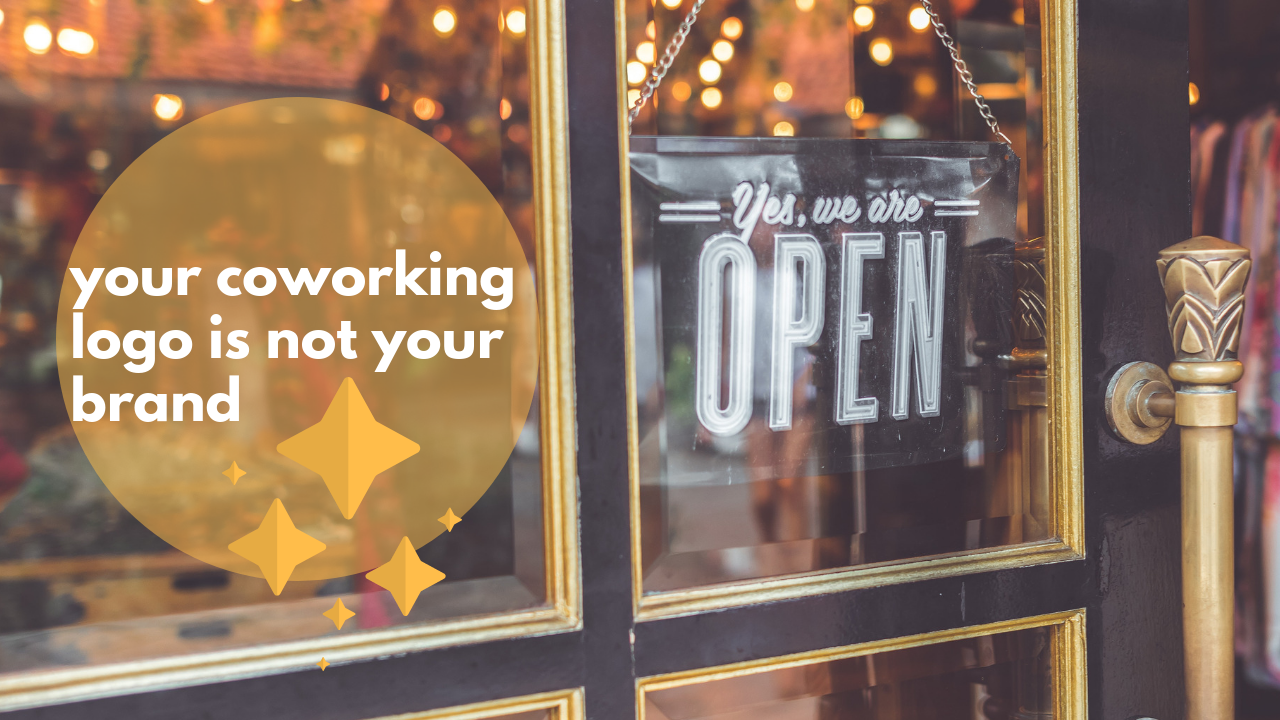- If every workspace uses community as its unique value proposition, there’s no differentiation
- Branding sets workspaces apart, which is why it should be a priority for coworking operators
- Brand is the set of expectations, memories, stories and relationships that influence a consumer’s decision to choose your workspace over another
Earlier this year Fast Company published an article titled, “Here are a bunch of cowork startups saying the same things about how different they are”. According to it, “sounding the same as each other is what sets them all (coworking spaces) apart.”
Fast Company’s article pointed to the fact that many coworking operators were using community as their unique value proposition and as their main selling point. As the industry has grown and new operators continue to emerge, community is no longer enough when marketing a space.
Seth Godin, author and marketing expert, stated in a recent video that the value of a brand is “how much extra am I paying above the substitute. If I’m not paying extra, you don’t have a brand.” Godin gave an example comparing Nike vs big-chain hotels like Hyatt or Marriott. According to him, the hospitality industry has logos, but lacks brands.
Godin defines a brand as “The set of expectations, memories, stories and relationships that, taken together, account for a consumer’s decision to choose one product or service over another. It’s a story, a set of emotions and expectations and a stand-in for how we think and feel about what you do.”
In short, when you have a brand, you set expectations.
Godin argues that hotels have no brand because if they switched their logos, people wouldn’t be able to tell in which hotel they are staying. He gives the example that if Nike opened a hotel everybody would know what it would be like because they have a distinct brand. On the other hand, if Hyatt or some other big hotel chain came out with sneakers, we would have no clue what they would be like.
Godin has an interesting point. The flexible workspace industry has grown exponentially over the past few years; it’s the new normal, and this means that there are more options for workspace seekers out there. There’s more competition.
Having a good story to tell — having a brand — can greatly help workspace operators stand out from the rest of the crowd.
What are you as a workspace operator doing to make sure that when people walk into your space they know where they are? And we’re not talking about your logo; keep in mind that many medium and large companies who want to use coworking spaces are concerned about not losing their own culture and brand.
People should be able to recognize your space even without a logo up on the wall. You have to be able to convey what you are doing differently from the workspace down the street and why people should pay more (or at least the same price) to use your space.
Let’s go back to Godin. He argues that there are new boutique hotels that charge double what a Hyatt charges even though they offer less by the Hyatt measure. By someone else’s measure, someone who cares about the people in the lobby, or the bar, or the location, believes that the boutique hotel offers a lot more.
Now think about this and apply it to your workspace and the flexible workspace industry. Your brand is your substance and customers need to be able to identify and relate to it. Even if you’re not competing against WeWork, you are competing against a lot of independent operators as well and you need to think about your differentiation factor.
Is it your design? Is it how you choose your vendors? Is it because you’re sustainable and focused on wellness? Is it because you offer the best technology? Do you have the fastest wifi in the area? Is your furniture ergonomic? Do you have a staple set of colors that you use in your location(s)?
If someone walks into your space, what is that thing that will make them say “Oh! I know I am in (insert your workspace name)”. It’s about figuring out what matters to your target audience and delivering on that — this will become your brand promise.


 Dr. Gleb Tsipursky – The Office Whisperer
Dr. Gleb Tsipursky – The Office Whisperer Nirit Cohen – WorkFutures
Nirit Cohen – WorkFutures Angela Howard – Culture Expert
Angela Howard – Culture Expert Drew Jones – Design & Innovation
Drew Jones – Design & Innovation Jonathan Price – CRE & Flex Expert
Jonathan Price – CRE & Flex Expert












